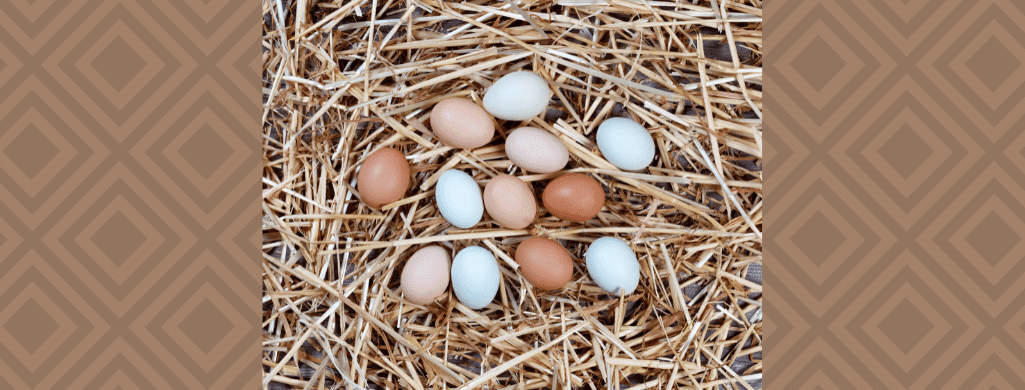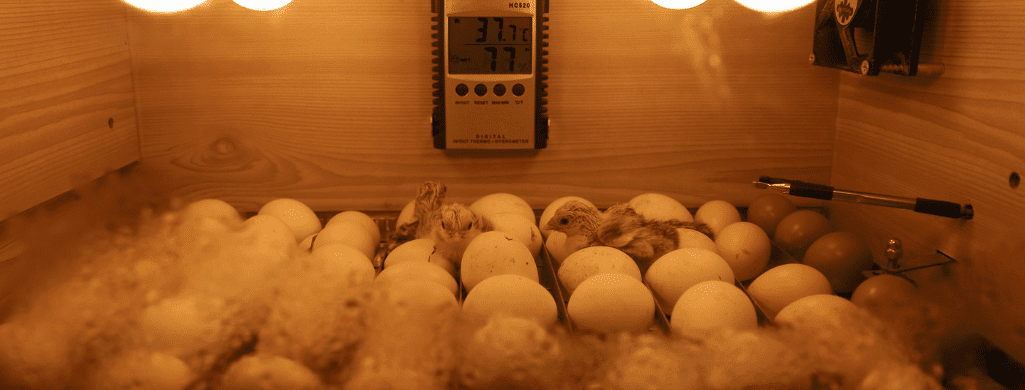I hear many chicken owners talk about how cool the Cream Legbar Chicken is.
It’s the unique crest of feathers sprouting from the back of their heads.
They even lay light blue or green eggs, between 150-200 eggs yearly.
But it may not be all sunshine and roses when it comes to breeding them and their mothering habits.
Are Cream Legbar chickens broody?
Cream Legbars do not usually go broody, but it depends on the individual bird and its living environment. Hatchery strains of Cream Legbars never go broody. Cream Legbar hens raised in backyard flocks are more likely to go broody.
Read on to learn more about broody behavior in Cream Legbars.

Table of Contents
ToggleHow Do You Know if Your Cream Legbar Is Broody?
It is not hard to spot a broody Cream Leghorn hen. Broody hens display a variety of behavior changes.
The first sign of a broody Cream Leghorn is her grumpy attitude.
Do not be surprised if your hen growls or pecks at you when you come near her nesting box. This is her way of telling you to stay away from her eggs.
Broody hens refuse to leave their nesting box. The hens take short breaks for eating, drinking, and pooping, but they return to the eggs.
If you remove your hen from the nesting box and she runs right back to it, she is broody.
A broody hen fluffs her feathers and fans out her tail to appear larger. This behavior intimidates other chickens into leaving her alone.
Sometimes, a broody Cream Legbar plucks out her chest feathers. She adds these feathers to her nest to help insulate the eggs.
Once your broody hen lays a full clutch of eggs, she will not lay more until after her chicks hatch.
Expect this behavior to last for at least three weeks.
What Causes a Cream Legbar To Go Broody?
Hormones and seasonal changes trigger broodiness in Cream Legbars.
Sometimes when a laying hen matures, her motherly instincts kick in.
Hormones influence these instincts and cause the hen to want her eggs to hatch.
Cream Legbar hens may also get broody as warmer weather approaches and daylight hours increase.
Most hens go broody in the spring, but it happens during any time of the year under certain conditions.
Broodiness is also contagious. When one hen in the flock is broody, she encourages other hens to do the same.
It is unlikely that all of your hens will get broody simultaneously. But you still need an adequate number of nesting boxes in the coop.
Provide one nesting box for every 3-4 hens to avoid broken eggs and overcrowding.

What To Do if Your Cream Legbar Goes Broody
If you want fertile eggs to hatch, leave your broody Cream Legbar alone.
Monitor the hen to ensure she eats and drinks, but let her do her own thing.
Hovering over your broody hen or agitating her only causes stress.
In the absence of a rooster, you know the eggs are infertile.
It does not matter to the broody hen if her eggs are fertile. This creates a dangerous situation for your bird.
A broody hen gradually becomes unhealthy after not eating or drinking much.
The eggs also start to rot, spreading harmful bacteria in the nest.
You must remove the hen to a separate area to break her broodiness.
Keep the hen in a wire cage with food and water for around three days. Do not add bedding to the cage.
The cage is uncomfortable, but it cools the Cream Legbar’s body.
Place the cage above the ground, so the hen is not in danger of predator attacks.
After no more than three days, let the hen out of the cage.
If she runs straight back to her nest, she is still broody. You must place her back in the cage for another attempt.
How Often Do Cream Legbars Lay Eggs?
Cream Legbars begin laying eggs when they are 5-6 months of age.
A Cream Legbar hen lays about four eggs per week, averaging 150-200 eggs per year.
This means your hen lays an egg around every other day.
Hatchery strains of Cream Legbars produce even more eggs than backyard layers.
When temperatures are too cold, most hens stop laying eggs in winter.
Unlike other chicken breeds, Cream Legbars are excellent winter layers.
This hardy breed does well in cold temperatures.
Related Post: How to help Cream Legbar chickens in winter
Just remember their large-size single combs are prone to frostbite.
The egg color of Cream Legbars is either light blue or light green. A single hen does not lay in both colors.
Blue egg layers do not lay green eggs and vice-versa.
Sometimes Cream Legbars lay white eggs. This is a recessive trait in some hens.
A high-quality diet with extra protein and calcium encourages egg laying.
Cream Legbars are active foragers. They do well free-ranging and in backyard runs.
Consider letting your hens free-range for extra nutrients from worms and other insects.
Learn more about when Cream Legbar chickens lay eggs and how they mature in our article at the link.

Can You Incubate Cream Legbar Eggs?
If your Cream Legbar is not broody enough to hatch her eggs, you may incubate them.
The Cream Legbar is a healthy breed, so hatching eggs is usually successful.
An egg incubator is expensive compared to a cardboard box with a heat lamp. But they make the process of hatching eggs easier.
Most egg incubators have a temperature and humidity display. This egg incubator includes an automatic egg turner and an external water reservoir.
Set the incubator up before you put the eggs inside. This ensures the incubator reaches proper temperature and humidity levels.
It takes approximately 21 days for Cream Legbar eggs to hatch.
The ideal temperature for hatching chicken eggs is 99.5° degrees Fahrenheit (37.5° C).
Maintain 40-50% humidity for the first 18 days. Raise the humidity to 65-75% for the last couple of days before hatching.
The eggs hatch within 24 hours of each other. If some eggs do not hatch, remove them before they rot.
Cream Legbars are auto-sexing chickens. This means the sex of the chicks is obvious within hours after hatching.
Female chicks have dark brown stripes along their backs. The male chicks are much lighter, with a light-colored yellow spot on their heads.
Some Cream Legbars do not breed true because they lack the dilute cream gene.
There is a shortage of Cream Legbar breeders, so finding a true one is difficult.
There are several auto-sexing types of chickens, including Barred Plymouth Rocks and Buff Brahmas.
Final Thoughts on the Eggs-ellent Cream Legbar
Cream Legbars are not usually broody birds.
If you want Cream Legbar chicks, consider investing in an egg incubator.
On the rare chance your Cream Legbar hen is broody, take care of her and meet her needs.
Learn to recognize the signs of a broody hen so you know what to do.
How useful was this post?
Click on a star to rate it!
We are sorry that this post was not useful for you!
Let us improve this post!
Tell us how we can improve this post?
